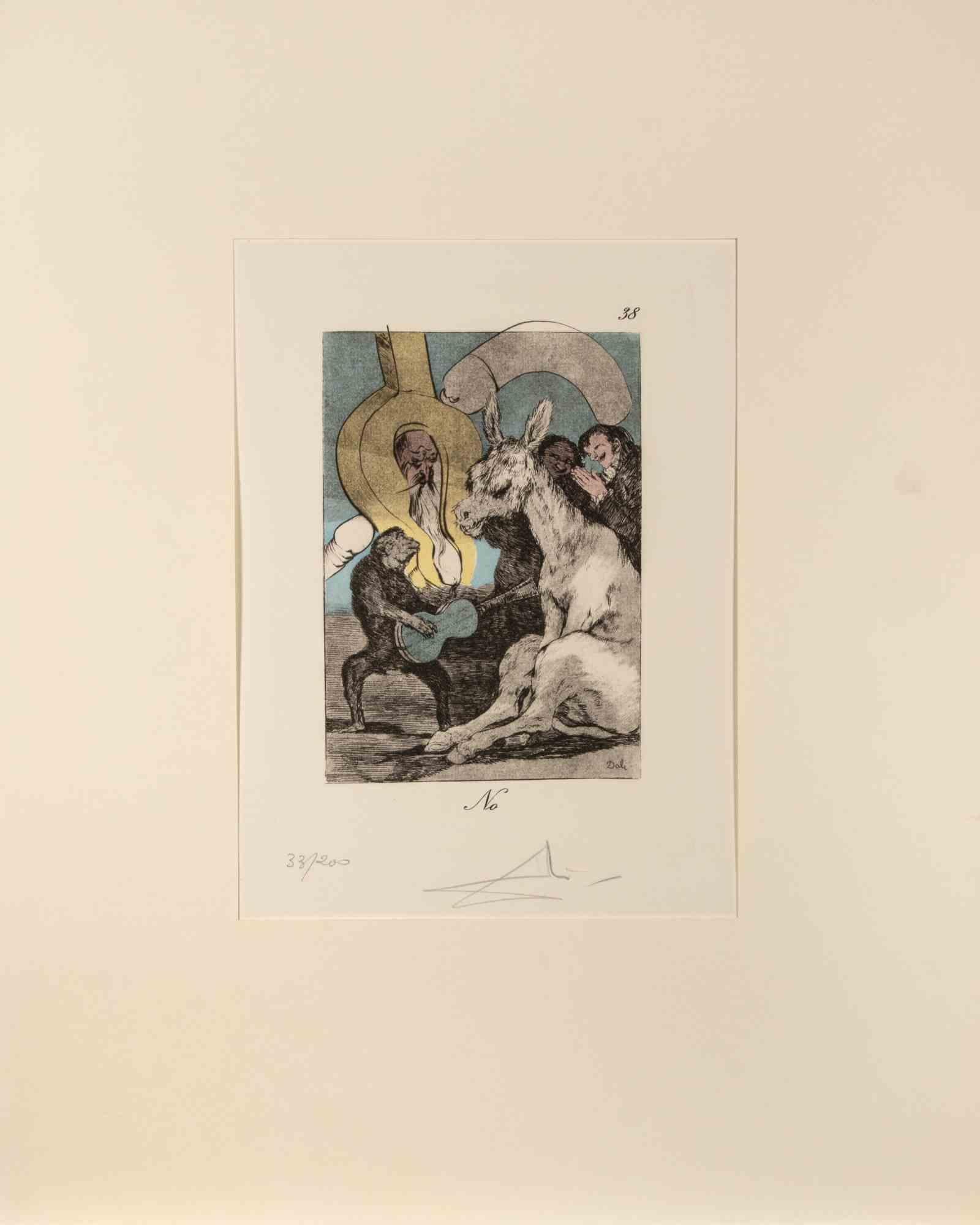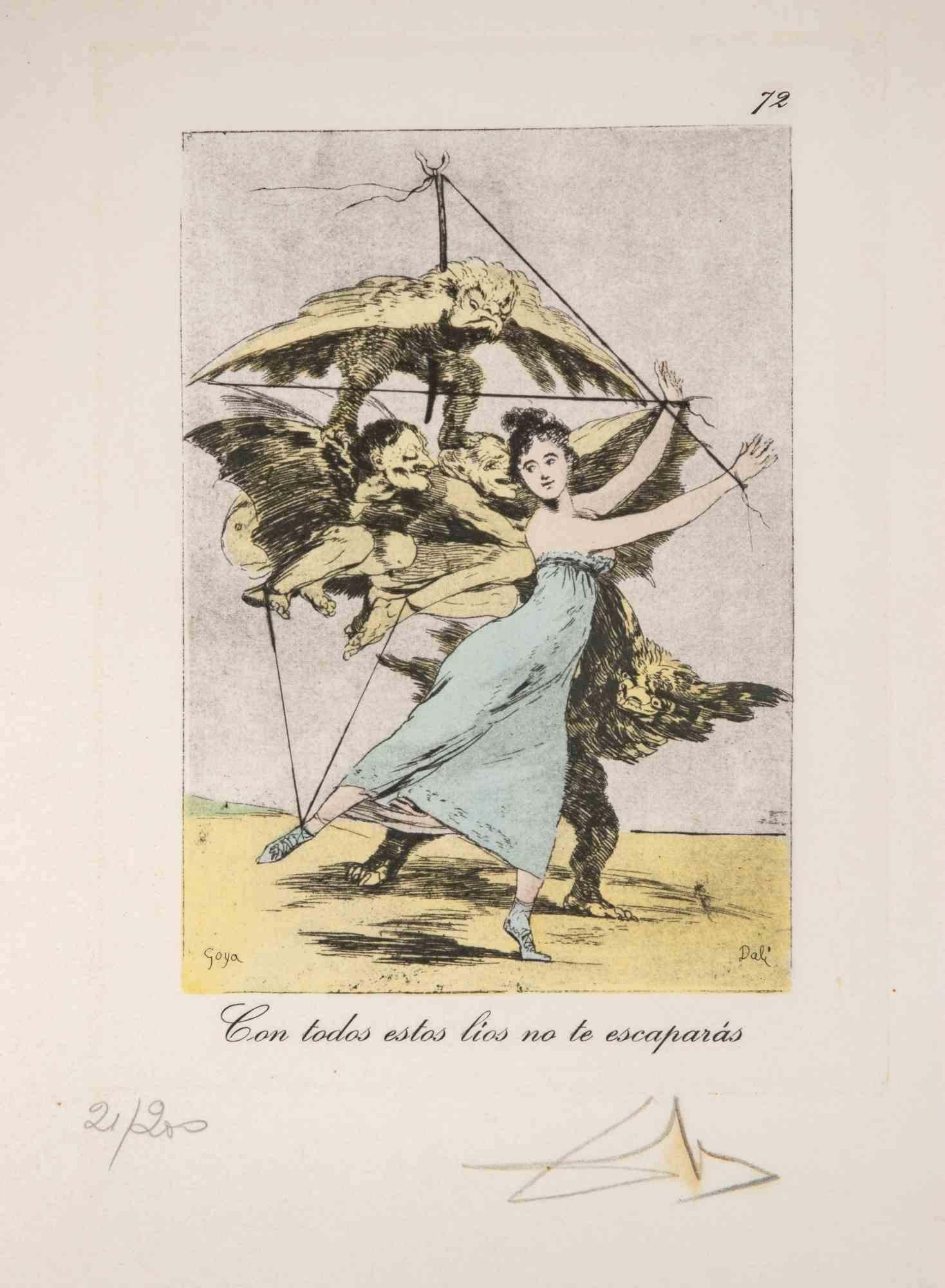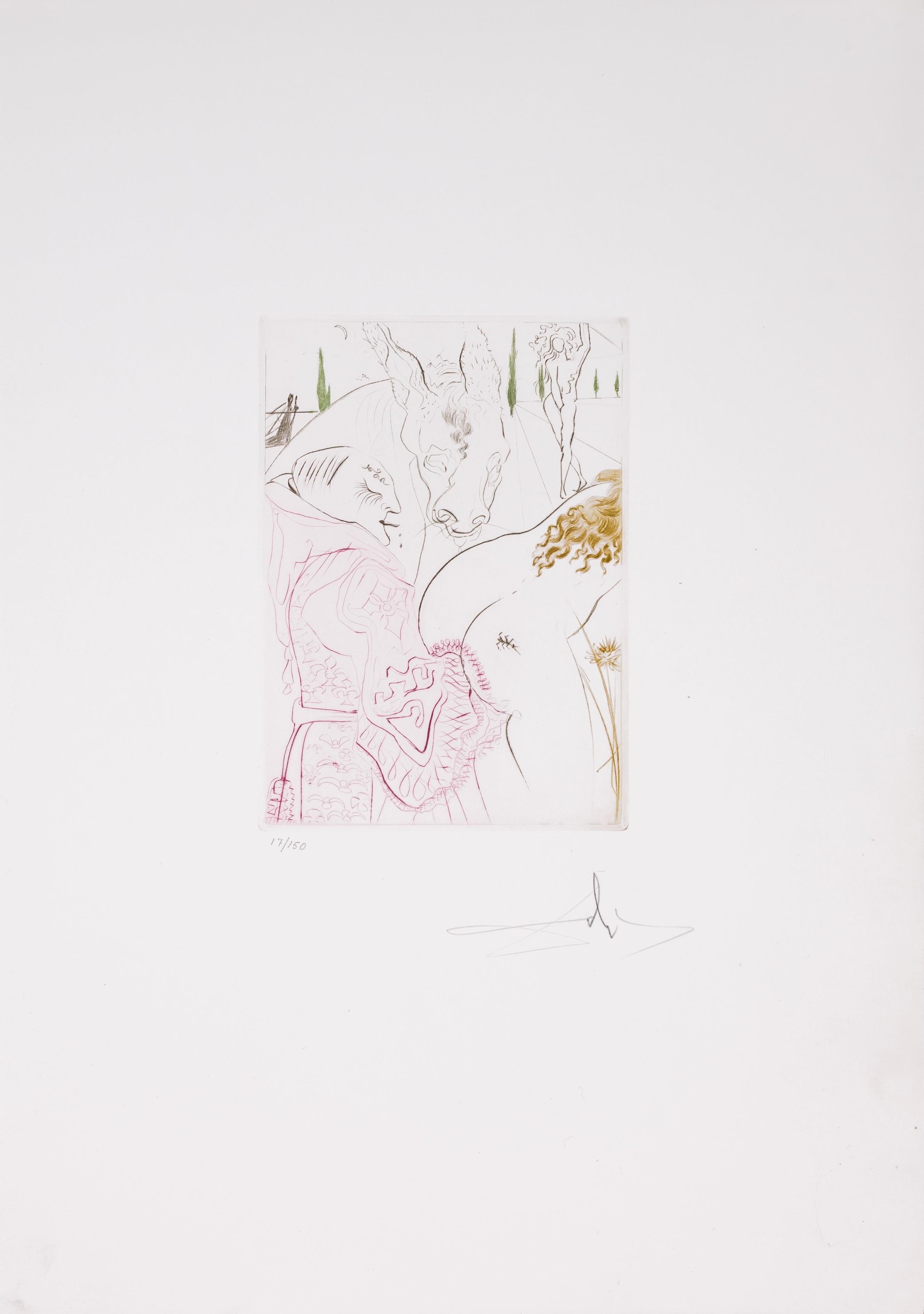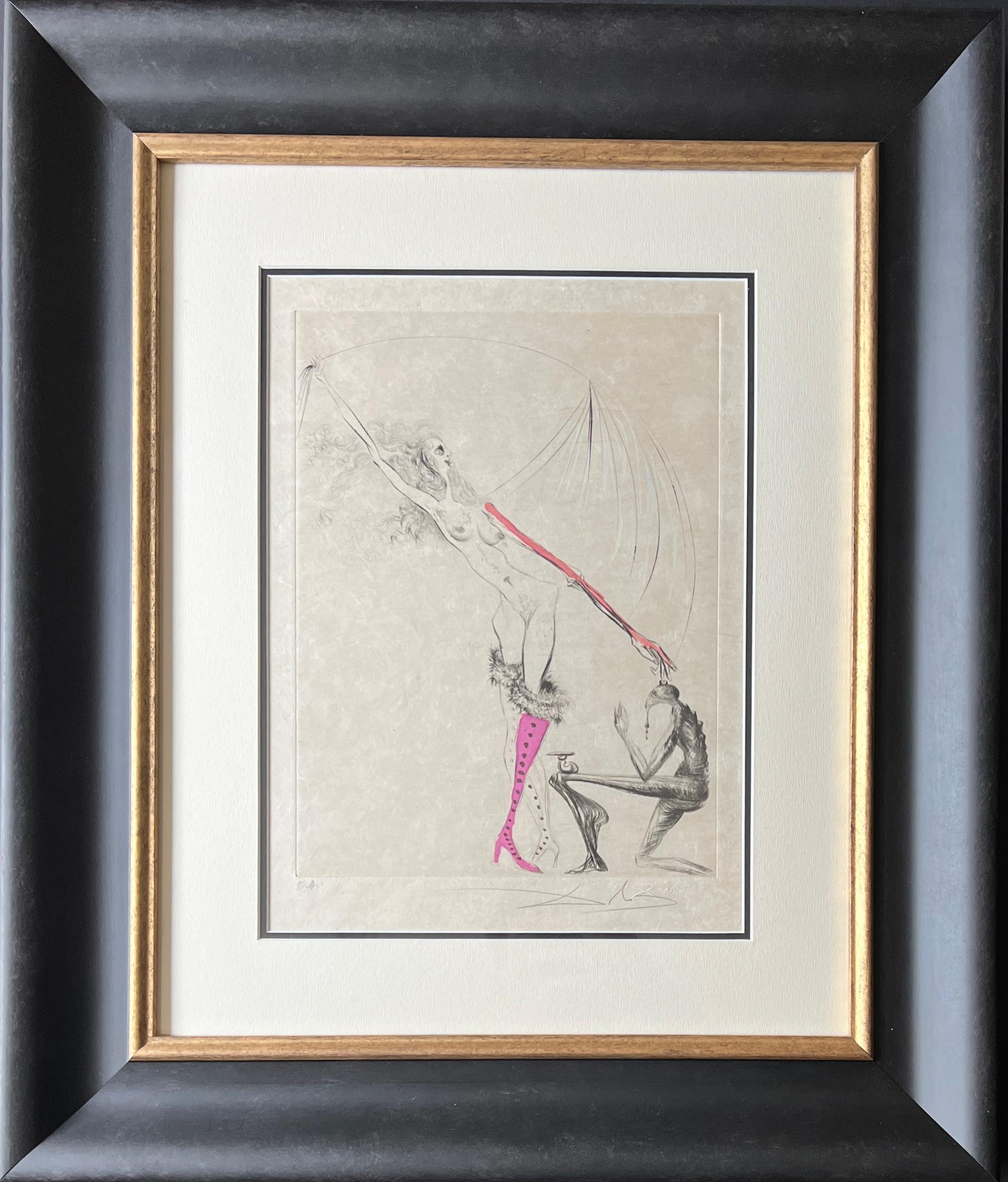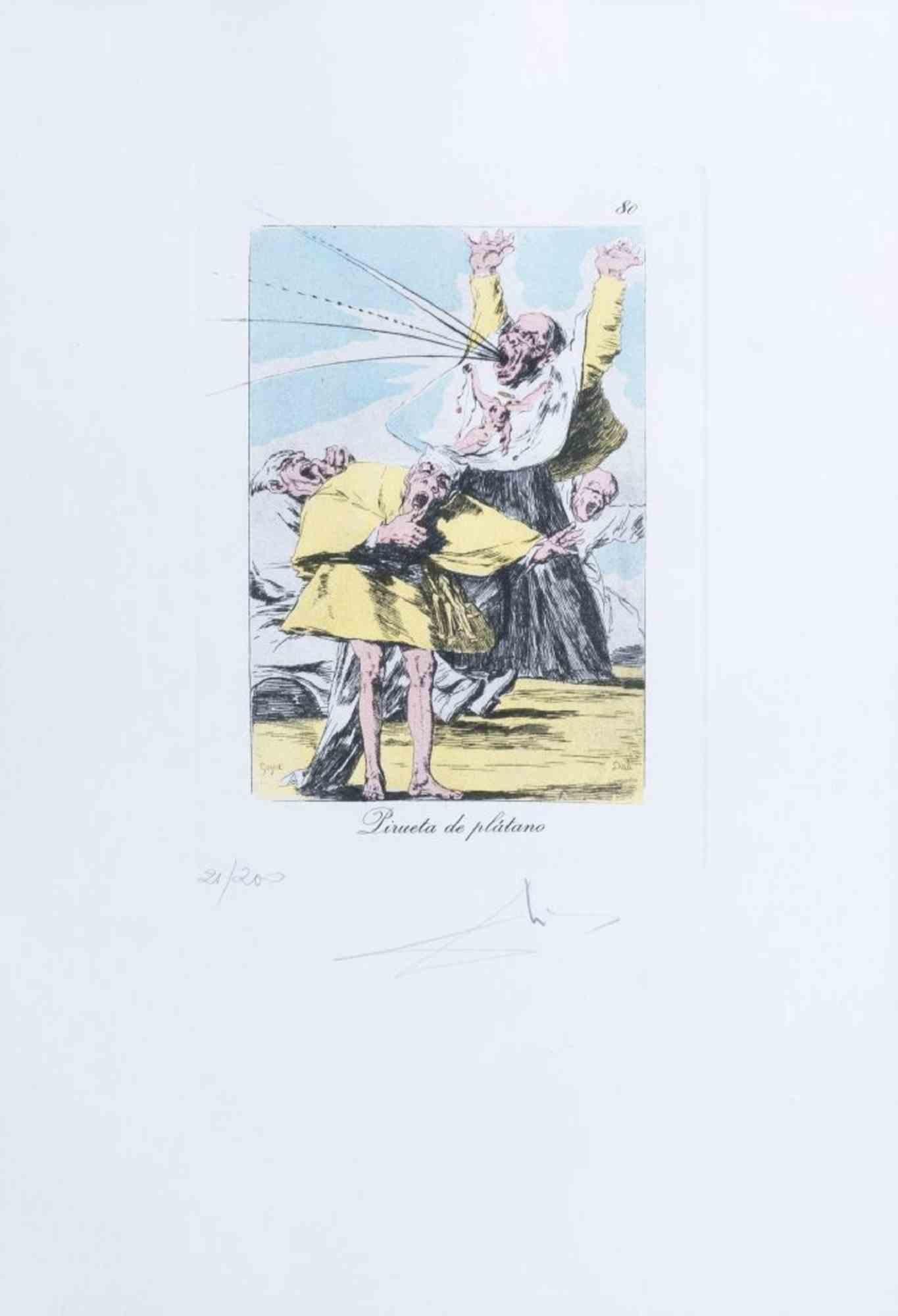Lawrence Kupferman'Fantasia Americana - 1880' — Mid-Century American Surrealism1943
1943
About the Item
- Creator:Lawrence Kupferman (1909-1982, American)
- Creation Year:1943
- Dimensions:Height: 11.88 in (30.18 cm)Width: 14.75 in (37.47 cm)
- Medium:
- Movement & Style:
- Period:
- Condition:
- Gallery Location:Myrtle Beach, SC
- Reference Number:
Lawrence Kupferman
Lawrence Kupferman was born in the Boston area, and he became one of the most important abstract artists to emerge from there in the early 1940s. Kupferman worked as an artist for the WPA in the 1930s, developing a strictly realistic style that depicted Victorian houses and other detailed architectural images.
Around 1943, Kupferman began to integrate more expressionistic forms into his works. He soon moved completely away from the recognizable subject matter and definitively became an abstract painter. In 1946, he studied with the influential German-born artist Karl Zerbe at the School of the Museum of Fine Arts in Boston. Kupferman later attended the Massachusetts College of Art, where he would become a professor and retire as its Head of Painting in 1969. His focus, as it would remain until the late 1960s, was on abstract, marine-like amoeboid forms—intimated, rather than strictly described.
Kupferman was an active participant in a huge thrust in Boston art in the 1940s to create a vibrant art scene that rivaled New York. He has been appropriately credited with bringing Abstract Expressionism to Boston, serving as a critical artistic conduit to New York painters such as Mark Rothko and Hans Hofmann, contacts he made in Provincetown, Massachusetts, where he spent his summers beginning in 1946. Kupferman’s unique brand of abstraction integrated with the already burgeoning figurative expressionism in Boston, and he showed at the Boris Mirksi Gallery, arguably the most important Boston gallery at the time. He served as the Chair of the Modern Artists Group and is considered one of the major Boston artists whose numerous exhibitions throughout the world helped establish that city as a vital art scene.
- ShippingRetrieving quote...Ships From: Myrtle Beach, SC
- Return PolicyA return for this item may be initiated within 7 days of delivery.
- 'Grand Central Station' — 1920s New York CityBy Otto KuhlerLocated in Myrtle Beach, SCOtto Kuhler, 'Grand Central Station', etching and drypoint, 1927, edition c. 50, Kennedy 27. Signed and titled in pencil. A superb, richly-inked impression, in brown/black ink, with ...Category
1920s American Impressionist Figurative Prints
MaterialsDrypoint, Etching
- The Drunkard in Spring —after Gustav Mahler's 'The Song of the Earth'Located in Myrtle Beach, SCArthur Paunzen, 'Der Trunkene im Frühling' (The Drunkard in Spring) from the suite 'Song of the Earth', etching, aquatint, and drypoint, 1920. Signed and titled in pencil. Signed in the plate, lower right. A fine, richly-inked impression, on cream, wove Japan paper; the full sheet with margins (2 1/4 to 4 1/4 inches), in good condition. Image size 12 3/8 x 9 1/8 inches; sheet size 19 5/8 x 13 5/8 inches. Matted to museum standards, unframed. ABOUT THIS WORK Pauzen’s suite of six etchings 'Das Lied von der Erde' (The Song of the Earth), published in 1920, was inspired by Gustav Mahler...Category
1920s Vienna Secession Figurative Prints
MaterialsEtching, Drypoint, Aquatint
- Of Youth —after Gustav Mahler's 'The Song of the Earth'Located in Myrtle Beach, SCArthur Paunzen, 'Von der Jugend' (Of Youth) from the suite 'Song of the Earth', etching, aquatint, and drypoint, 1920. Signed and titled in pencil. Signed in the plate, lower left. A fine, richly-inked impression, on cream, wove Japan paper; the full sheet with margins (2 1/4 to 4 1/4 inches), in good condition. Image size 12 1/4 x 9 1/16 inches; sheet size 19 3/4 x 13 5/8 inches. Matted to museum standards, unframed. ABOUT THIS WORK Pauzen’s suite of six etchings 'Das Lied von der Erde' (The Song of the Earth), published in 1920, was inspired by Gustav Mahler...Category
1920s Vienna Secession Figurative Prints
MaterialsEtching, Drypoint, Aquatint
- The Solitary One in Autumn—after Gustav Mahler's 'The Song of the Earth'Located in Myrtle Beach, SCArthur Paunzen, 'Der Einsame im Herbst' (The Solitary One in Autumn) from the suite 'Song of the Earth', etching, aquatint, and drypoint, 1920. Signed and titled in pencil. Signed in the plate, lower left. A fine, richly-inked impression, on cream, wove Japan paper; the full sheet with margins (2 3/8 to 4 1/8 inches), in good condition. Image size 12 3/8 x 8 7/8 inches; sheet size 19 5/8 x 13 3/4 inches. Matted to museum standards, unframed. ABOUT THIS WORK Pauzen’s suite of six etchings 'Das Lied von der Erde' (The Song of the Earth), published in 1920, was inspired by Gustav Mahler...Category
1920s Vienna Secession Figurative Prints
MaterialsEtching, Drypoint, Aquatint
- 'Cargo Carriers' — 1930s New York HarborBy Otto KuhlerLocated in Myrtle Beach, SCOtto Kuhler, 'Cargo Carriers', etching and drypoint, c. 1932, edition 10, Kennedy 44. Signed in pencil. A superb, atmospheric impression with rich burr and selectively wiped overall plate tone, in dark brown ink, on Arches cream laid paper; wide margins (2 to 2 3/4 inches), in very good condition. Printed by the artist. Original Kennedy Galleries mat and label. Scarce. "On my trips up and down N.Y. harbor on the Weehawken Ferry, the late evening sun playing on the side of the big liners has always intrigued me... The liner shown I believe to be the Vaterland of the North German Lloyd...Category
1930s American Modern Figurative Prints
MaterialsEtching, Drypoint
- 'Mother of All' – Mid-Century Surrealism, Atelier 17Located in Myrtle Beach, SCIan Hugo, 'Mother of All', engraving, 1945, edition 50. Signed, dated, titled, and numbered '48/50' in pencil. With the blind stamp 'madeleine-claude jobrack...Category
1940s Surrealist Figurative Prints
MaterialsEngraving
- No - Etching, Drypoint - 1977By Salvador DalíLocated in Roma, ITNo is a contemporary artwork realized by Salvador Dalì in 1977. The artwork is from the series: 'Les Caprices de Goya de Dali'. Drypoint on heliogravure, with pochoir on Rives pape...Category
1970s Surrealist Figurative Prints
MaterialsDrypoint, Etching
- Ponte de Rodillas - Etching, Drypoint - 1977By Salvador DalíLocated in Roma, ITPonte de Rodillas is a contemporary artwork realized in 1977. The artwork is from the series: 'Les Caprices de Goya de Dali'. Drypoint on Heliosgravure, on Rives paper. Plate dime...Category
1970s Surrealist Figurative Prints
MaterialsDrypoint, Etching
- Ponte de Rodillas - Etching, Drypoint - 1977By Salvador DalíLocated in Roma, ITCon todos estos líos no te escaparás is a contemporary artwork realized in 1977 by Salvador Dalì. The artwork is from the series: 'Les Caprices de Goya de Dali'. Drypoint on Helios...Category
1970s Surrealist Figurative Prints
MaterialsDrypoint, Etching
- Le Jument de Compère Pierre, 1972 (Le Decameron, Plate I)By Salvador DalíLocated in Greenwich, CTLe Jument de Compère Pierre from Dalí's Le Décameron portfolio is a drypoint etching with color on paper, signed Dalí lower right and numbered 17/150 lower left. From the Swedish edi...Category
20th Century Surrealist Prints and Multiples
MaterialsEtching, Drypoint
- Salvador Dalí – La Botte violette – hand watercolored drypoint etching – 1969By Salvador DalíLocated in Varese, IThand watercolored drypoint etching on extremely fine Japanese paper, edited in 1969 limited edition of 145 copies water-colored , numbered in lower left corner ea ( artist proof ) si...Category
1960s Surrealist Figurative Prints
MaterialsWatercolor, Paper, Drypoint, Etching
- Pirueta de Plátano - Drypoint and Collotype by S.Dalì - 1977By Salvador DalíLocated in Roma, ITPirueta de Plátano is an original contemporary artwork realized in 1977. Dry point and collotype, Hand signed by the artist on the lower margin. Numbered on the lower left margin....Category
1970s Surrealist Figurative Prints
MaterialsEtching, Drypoint
